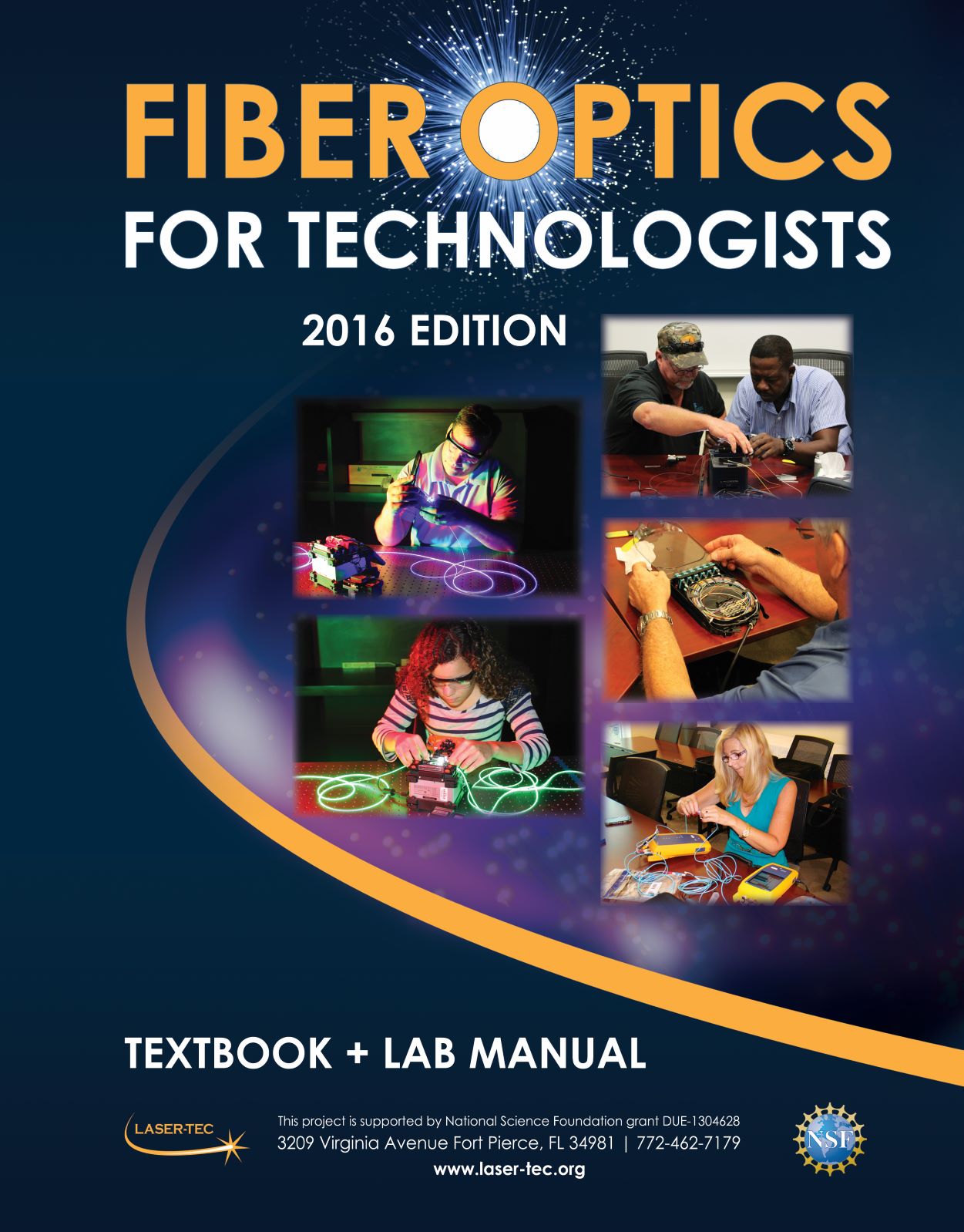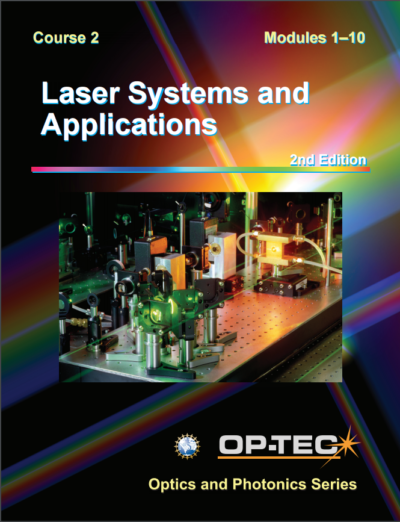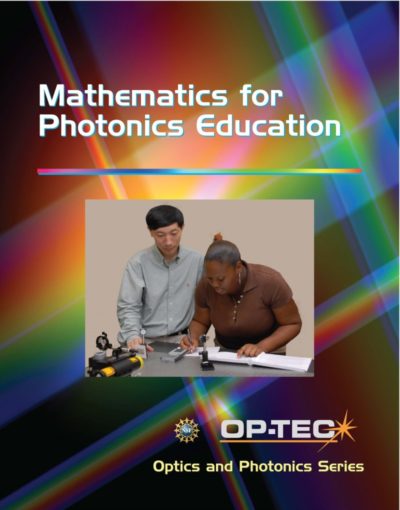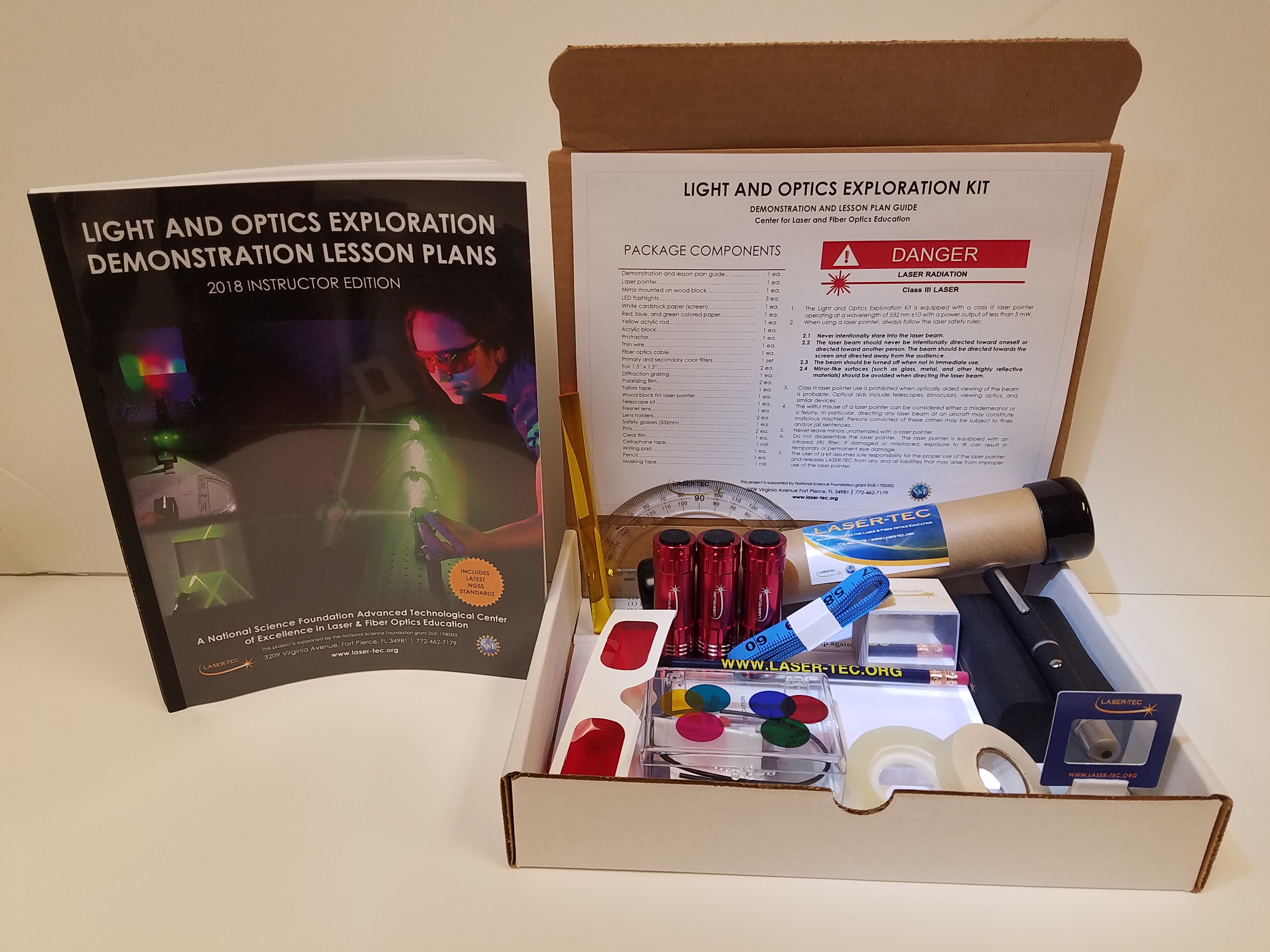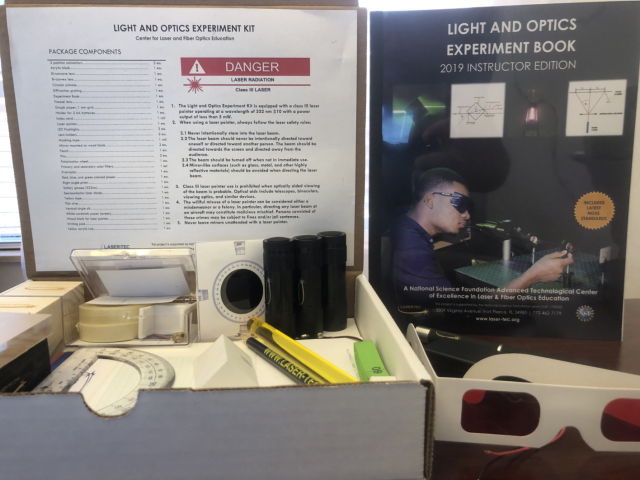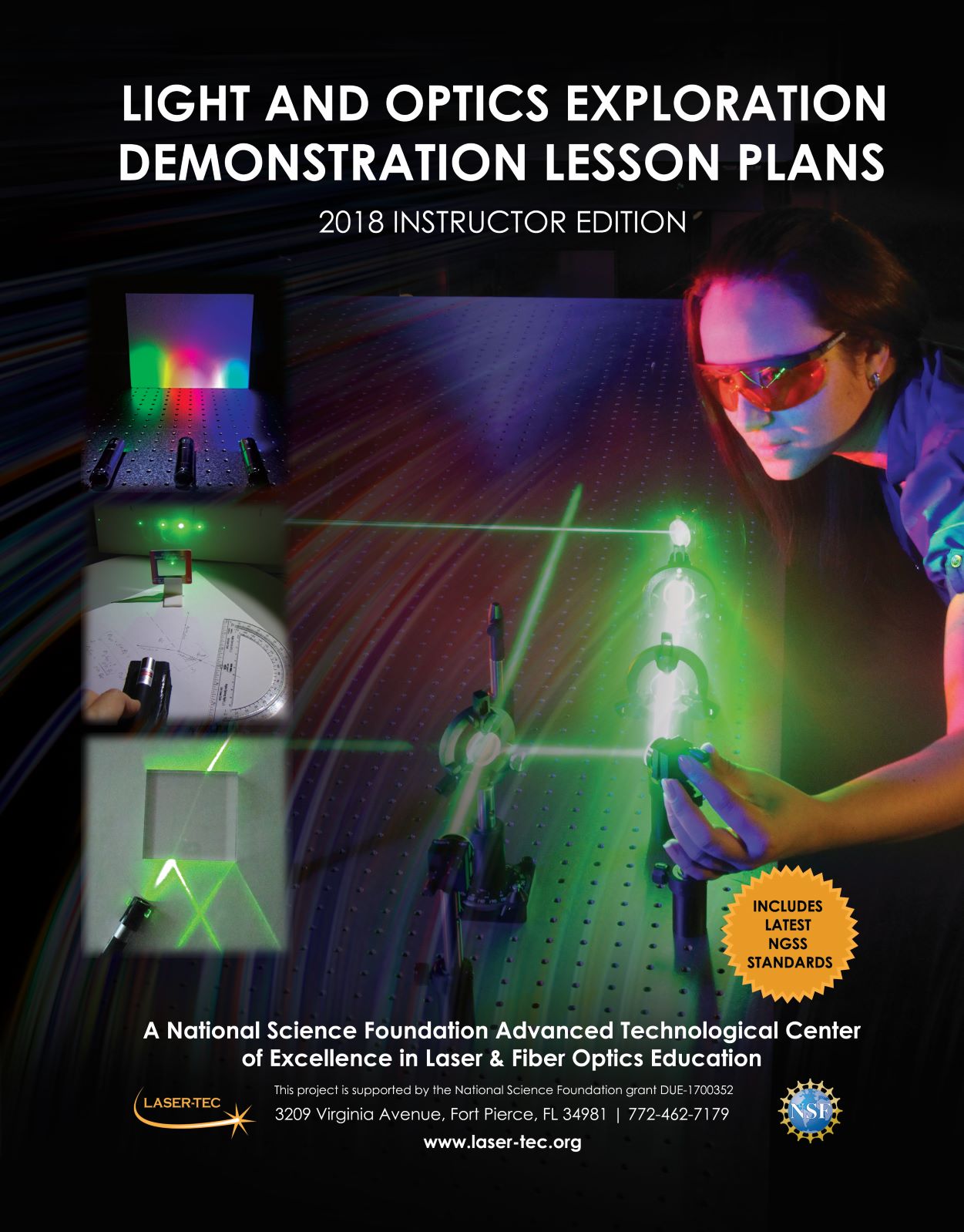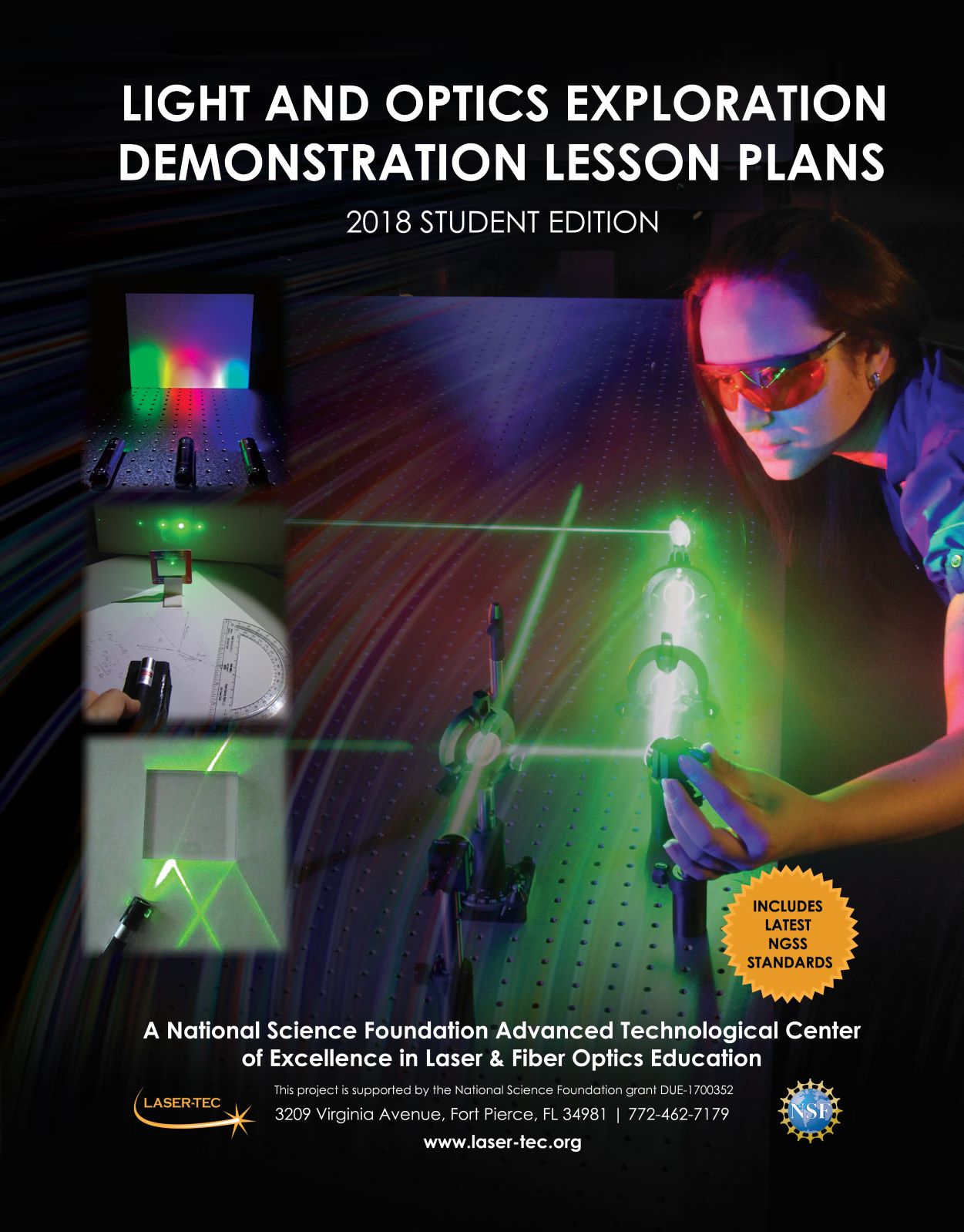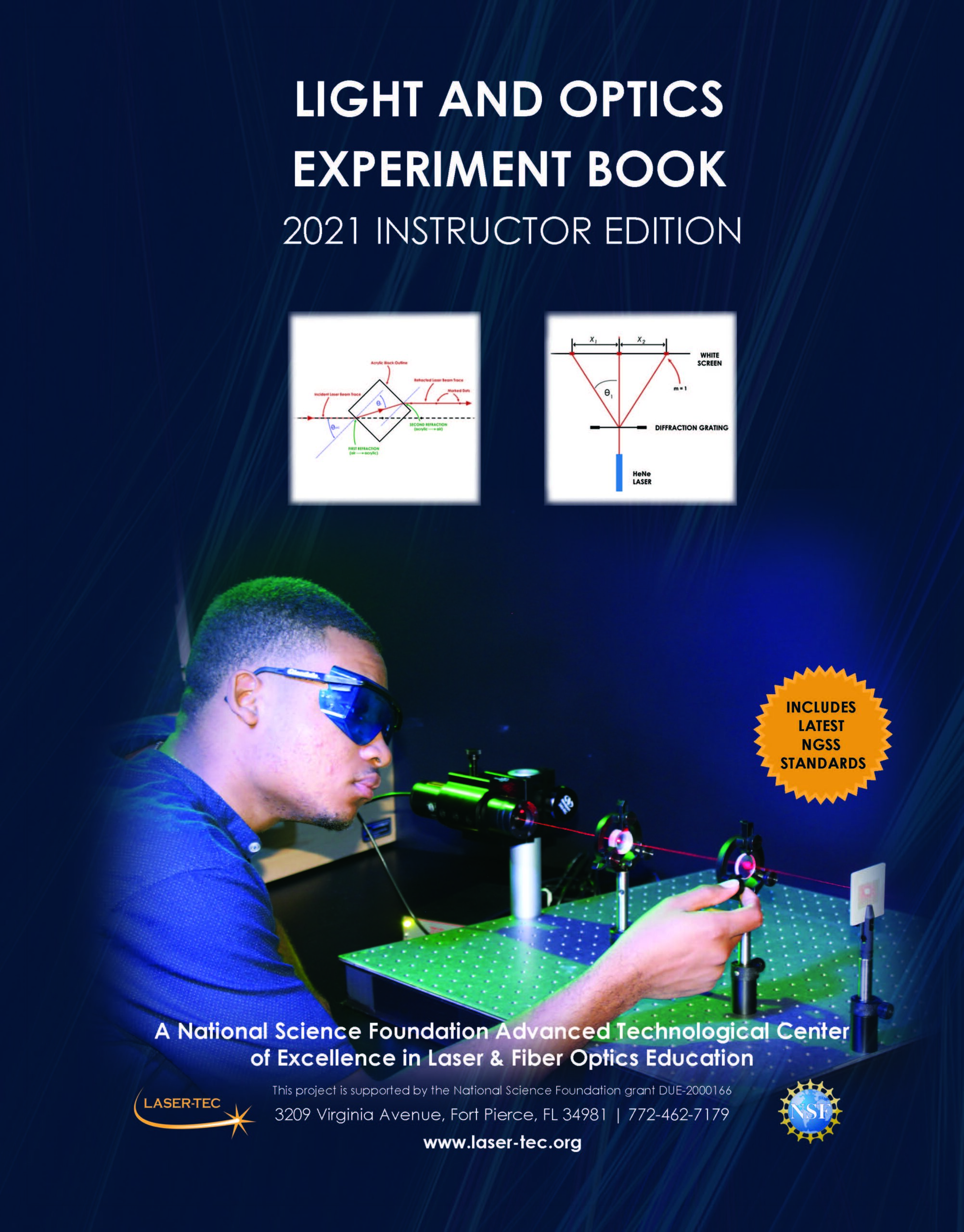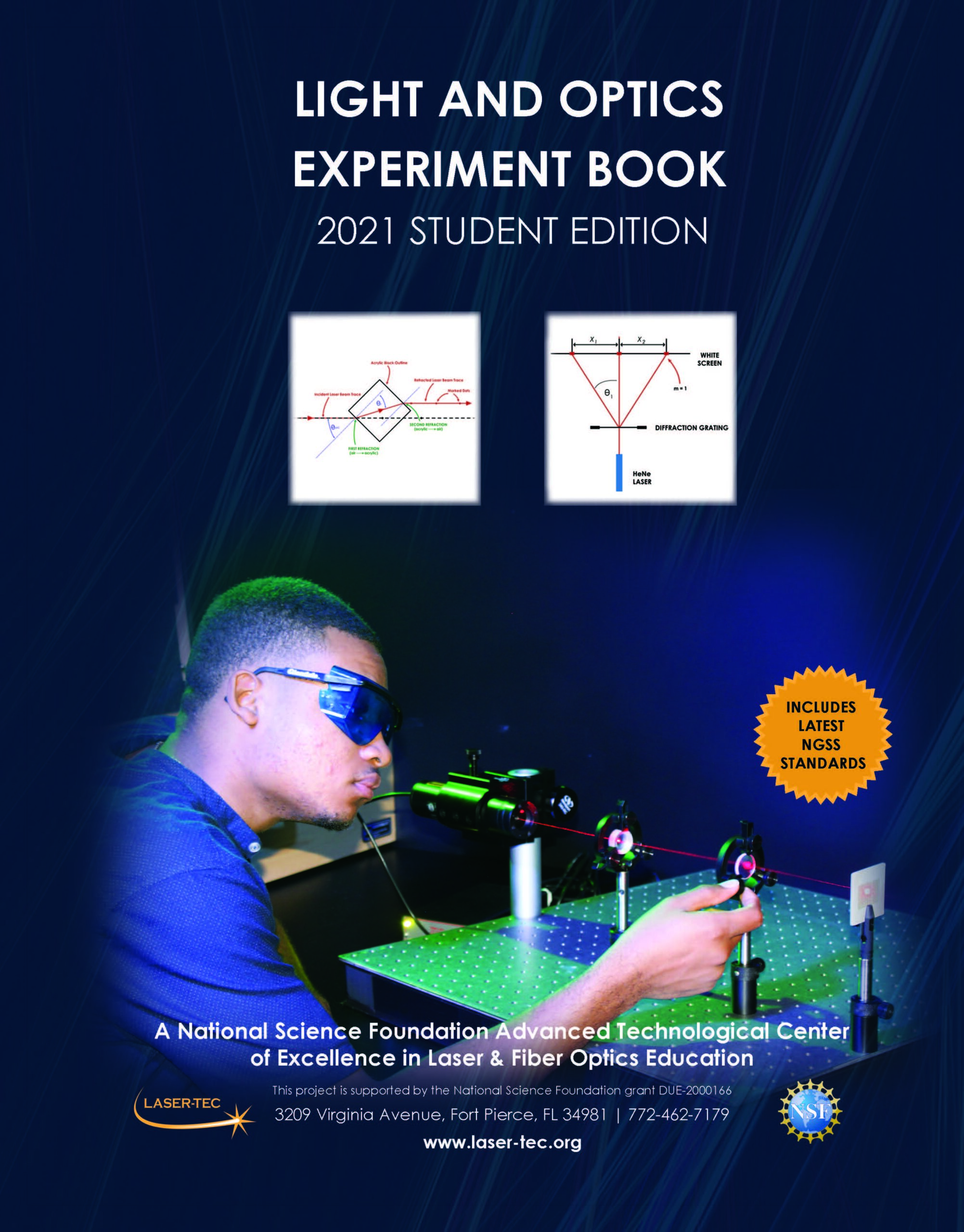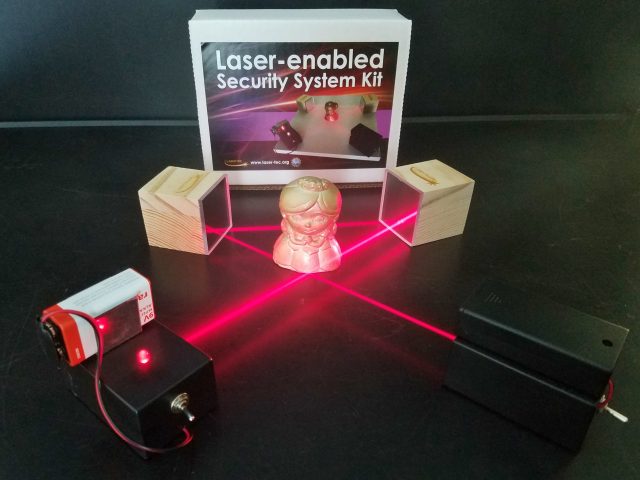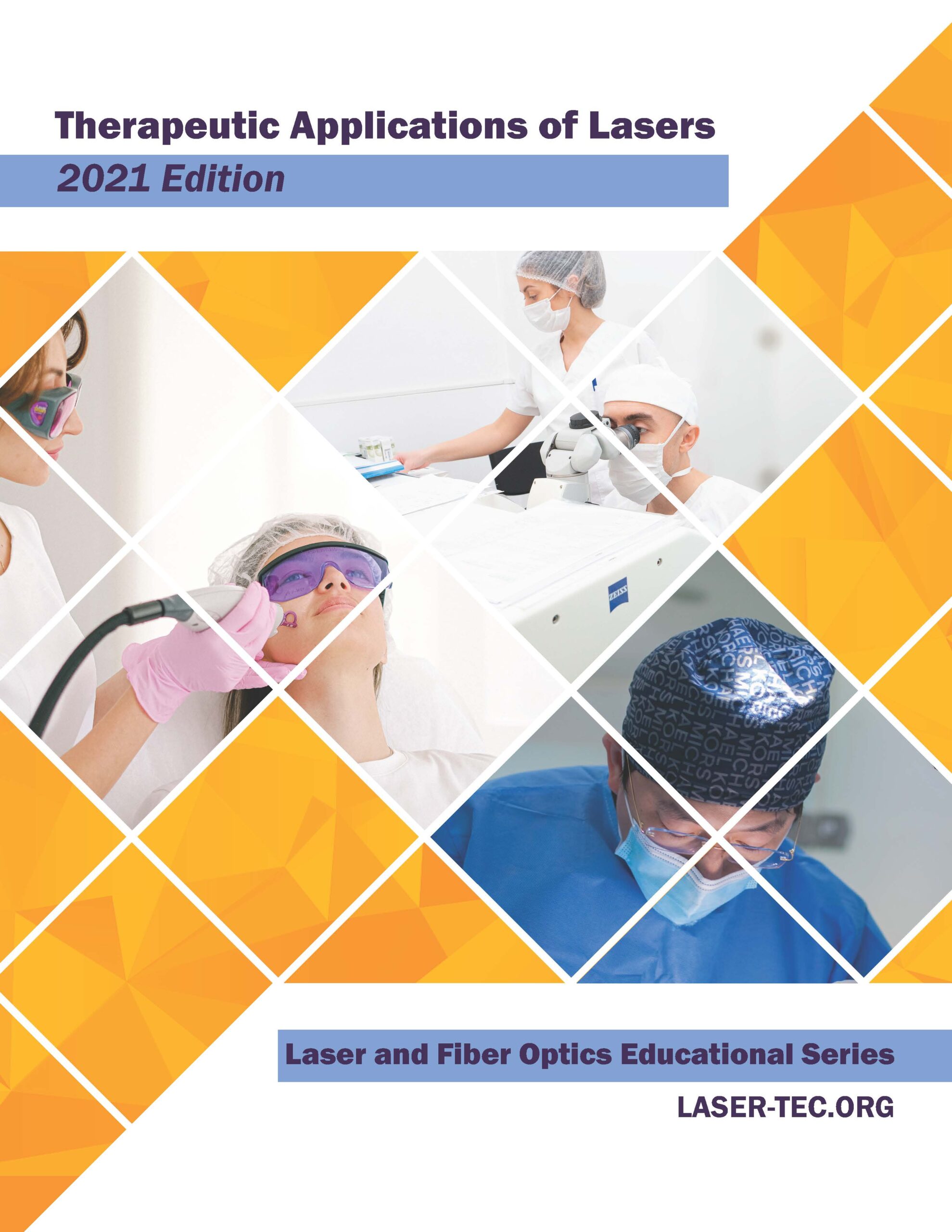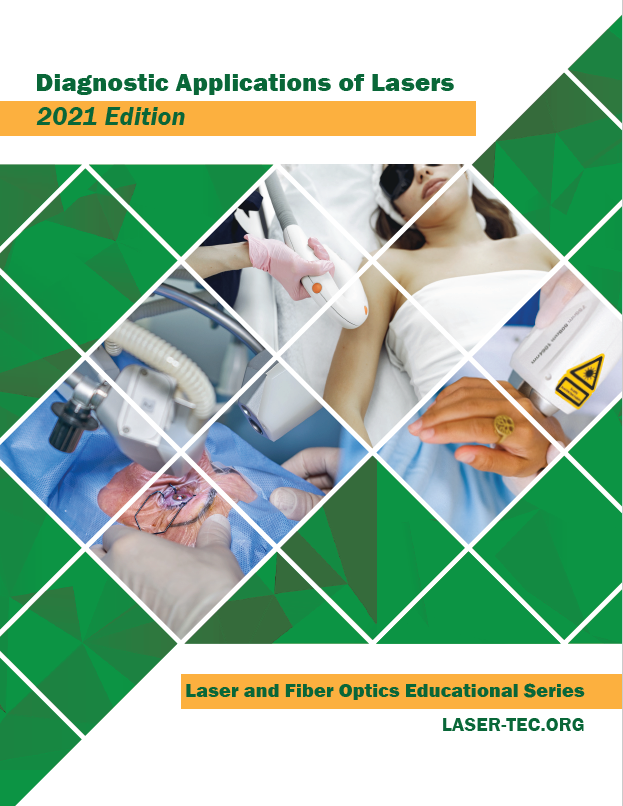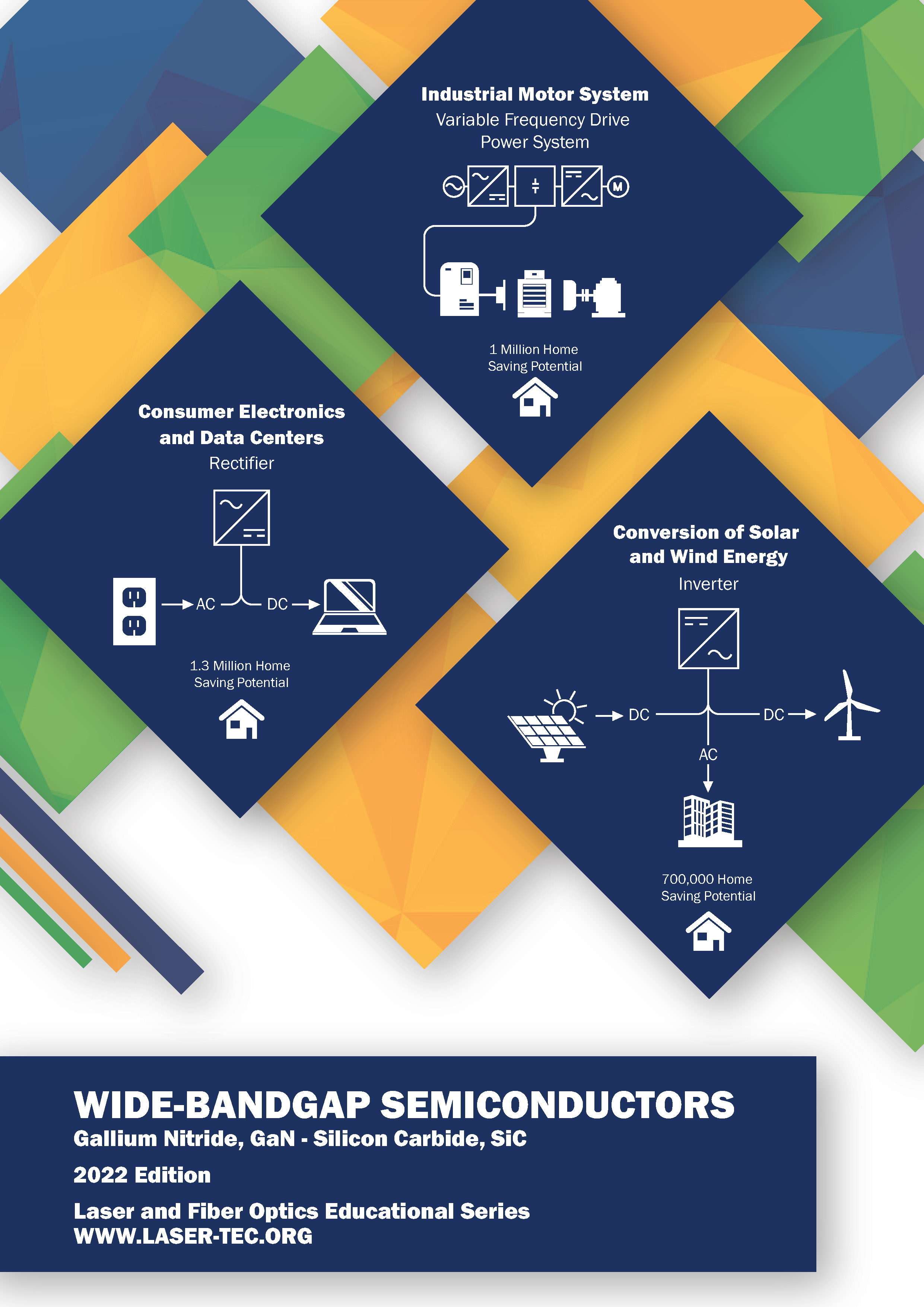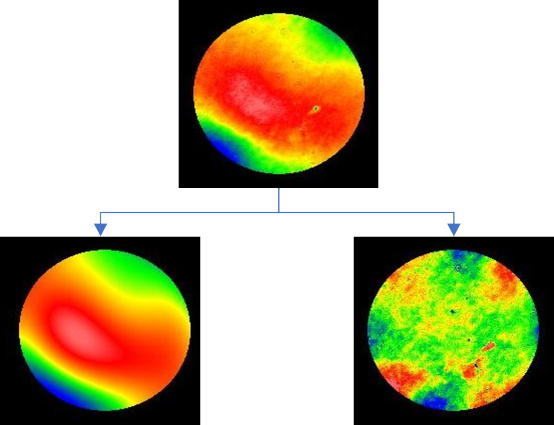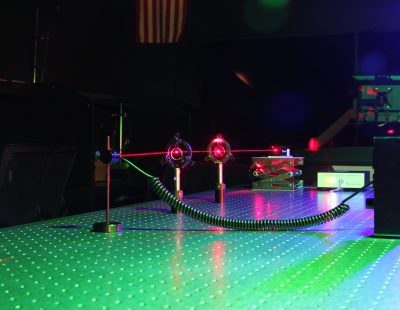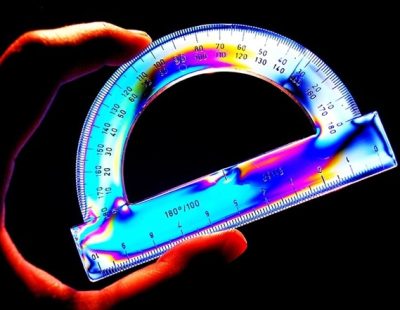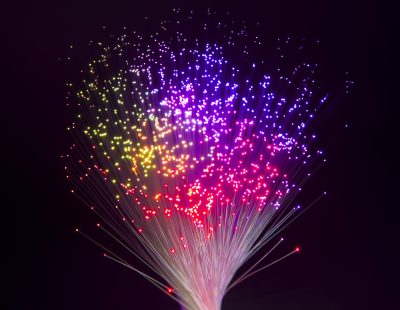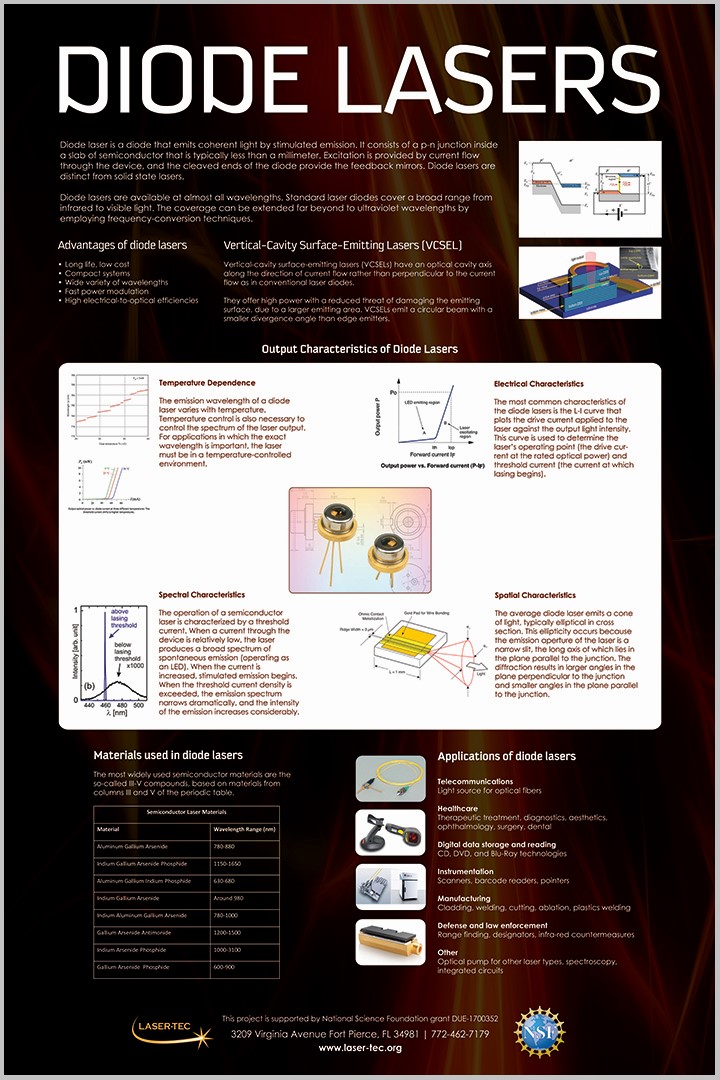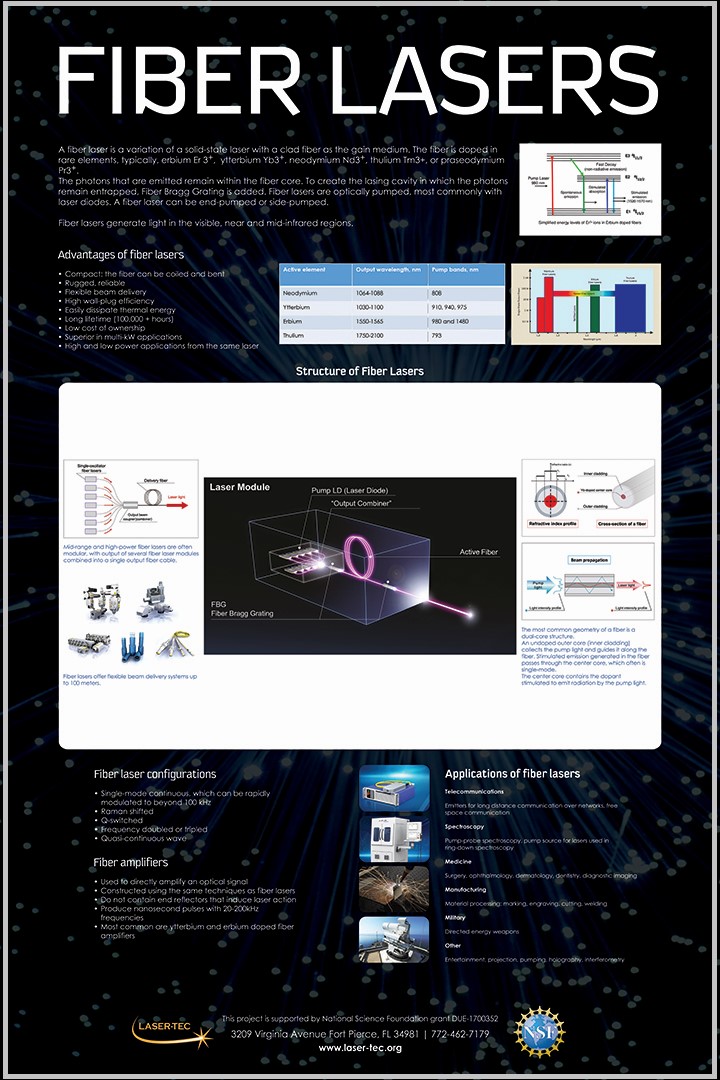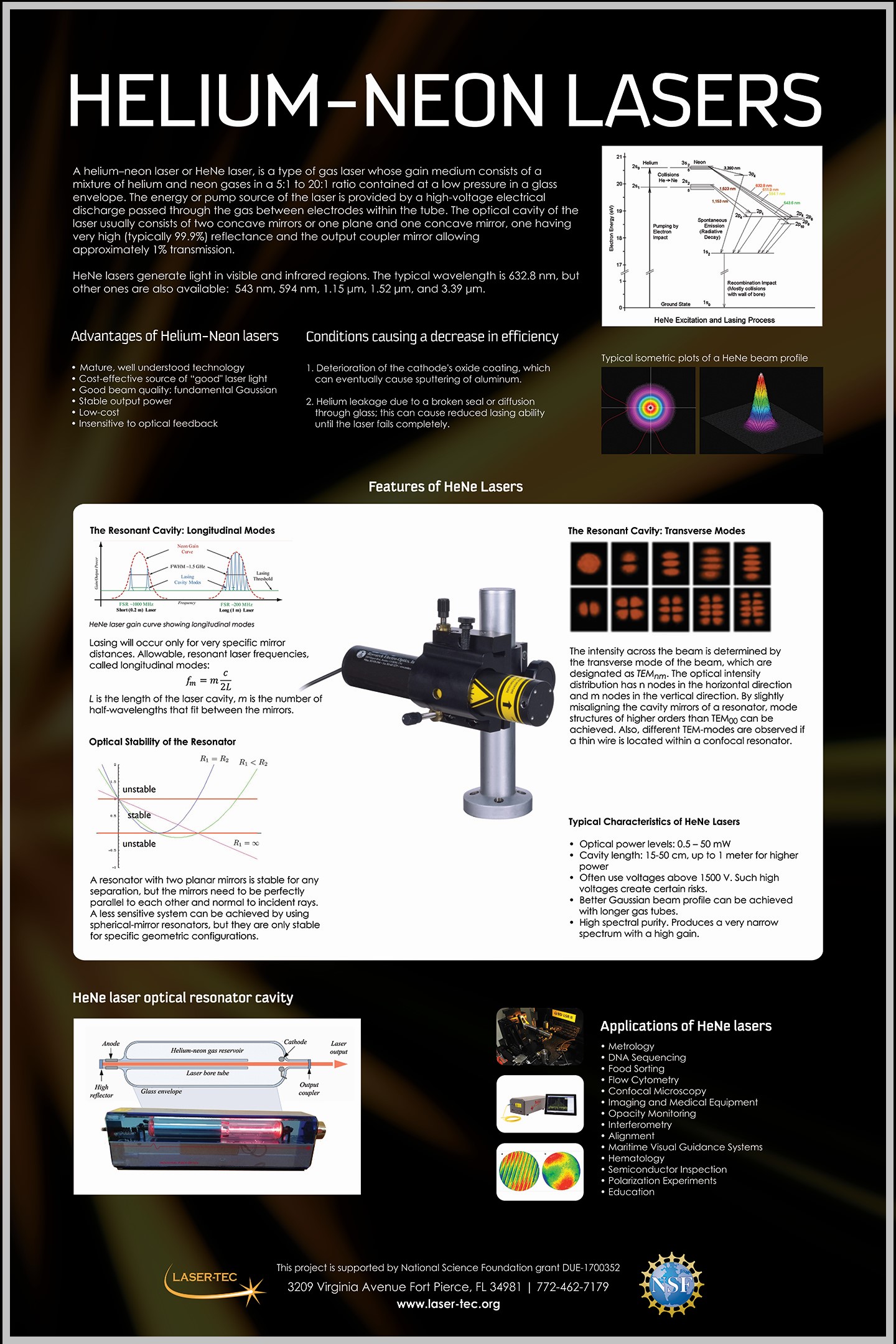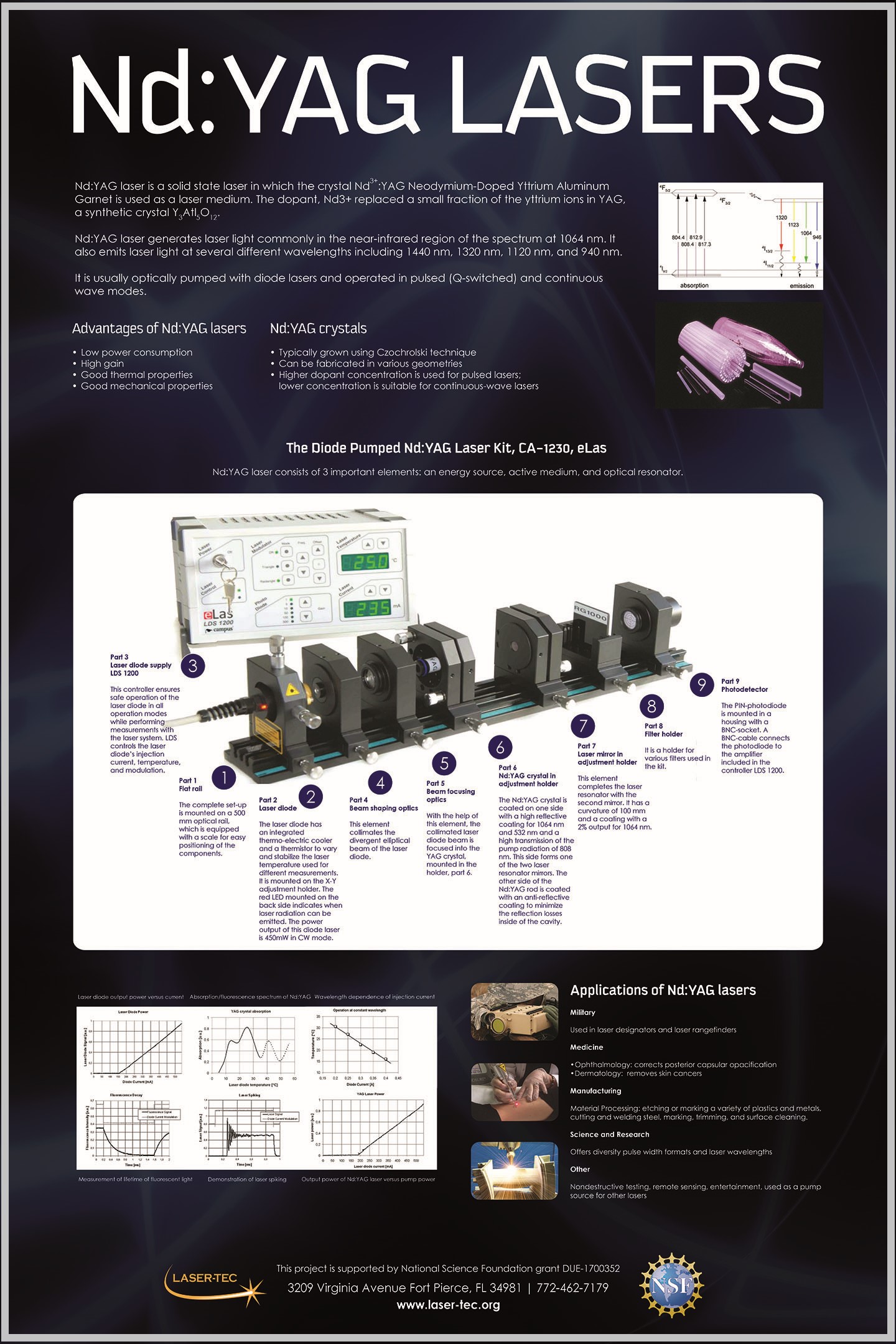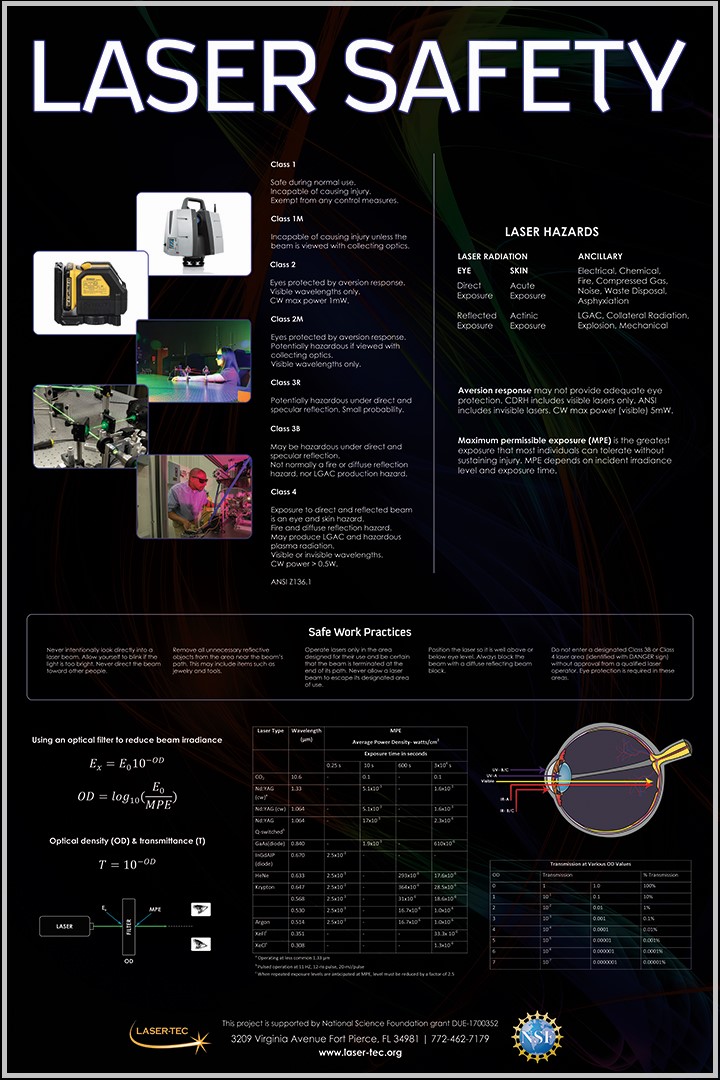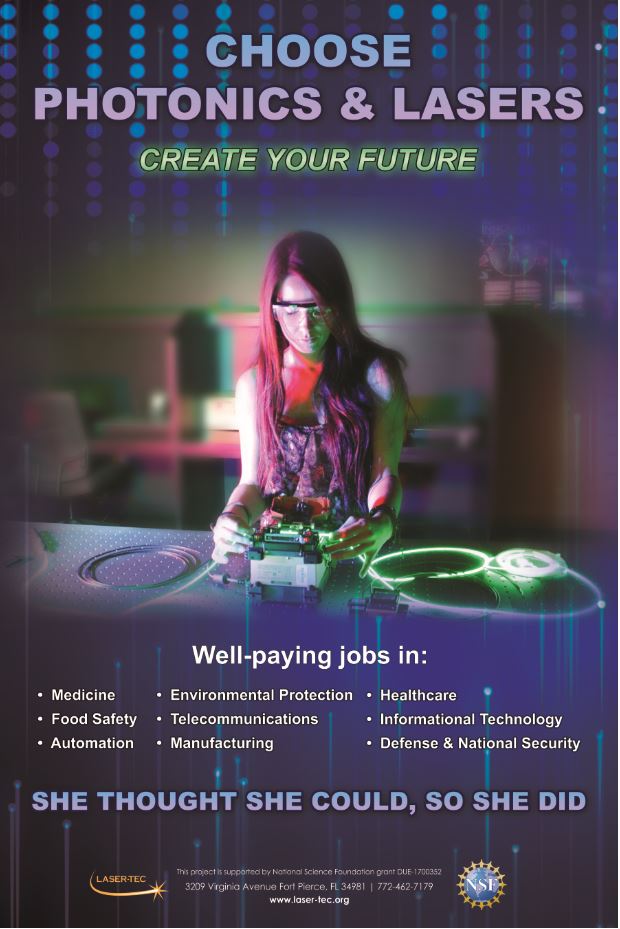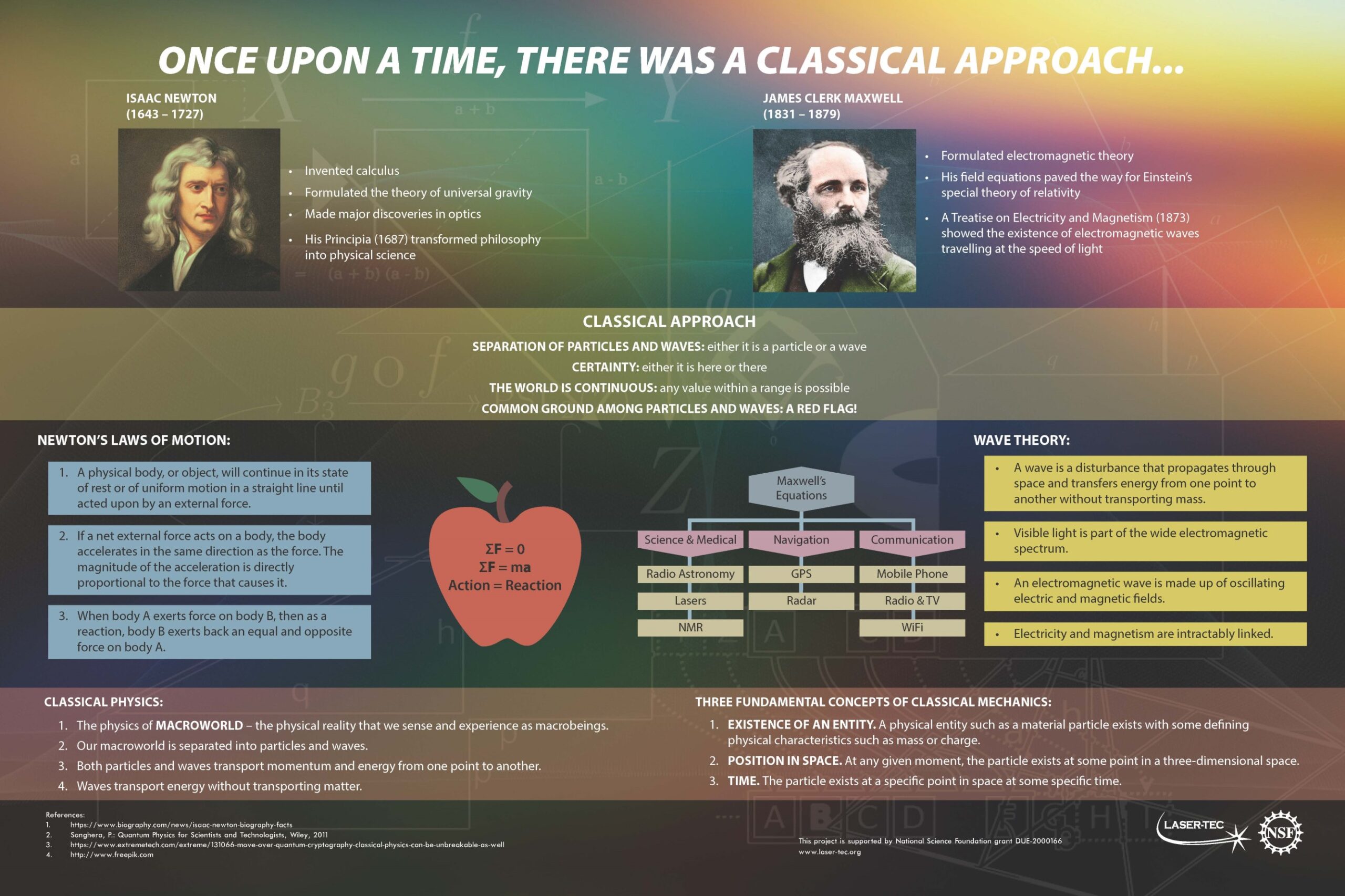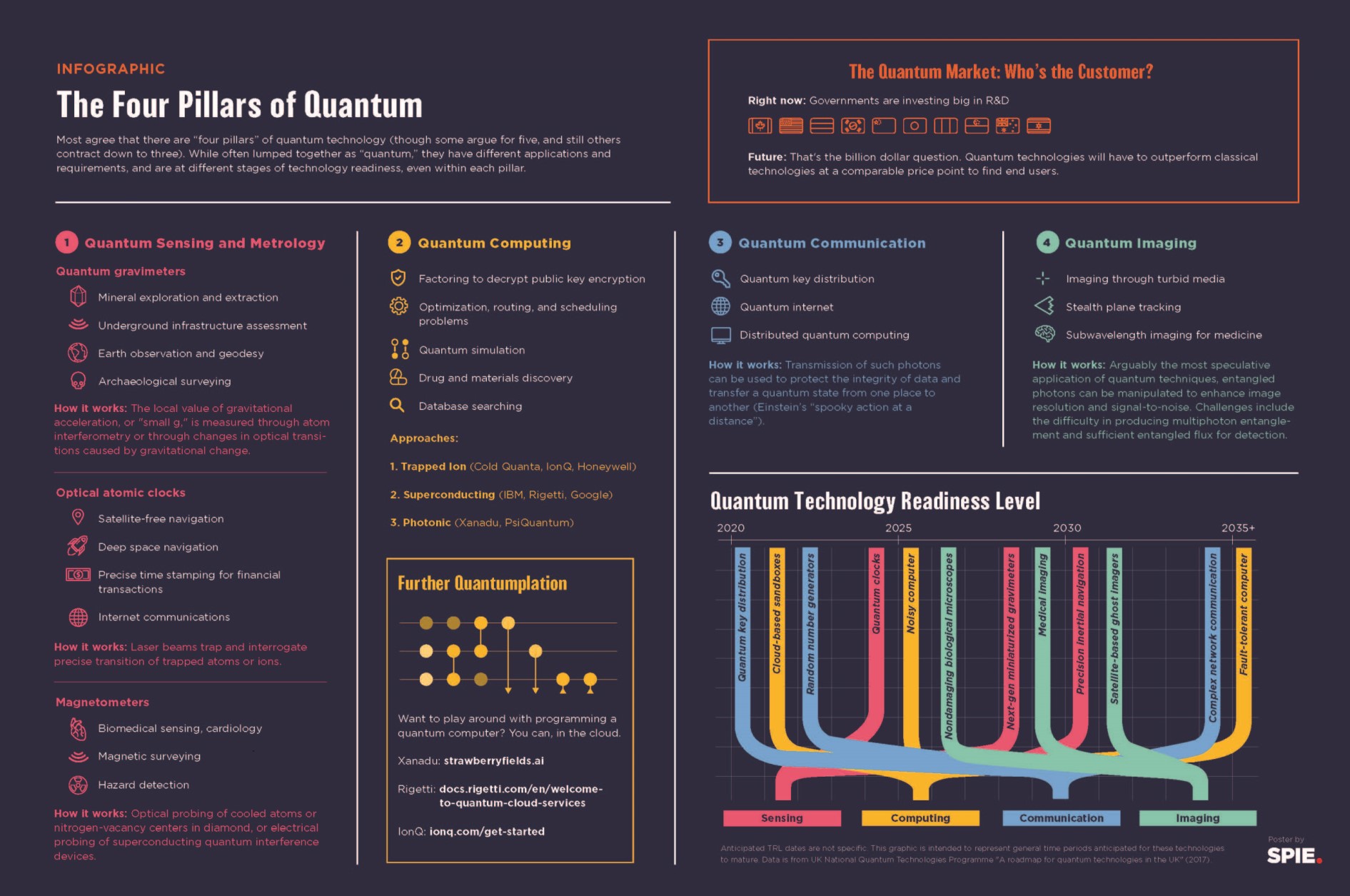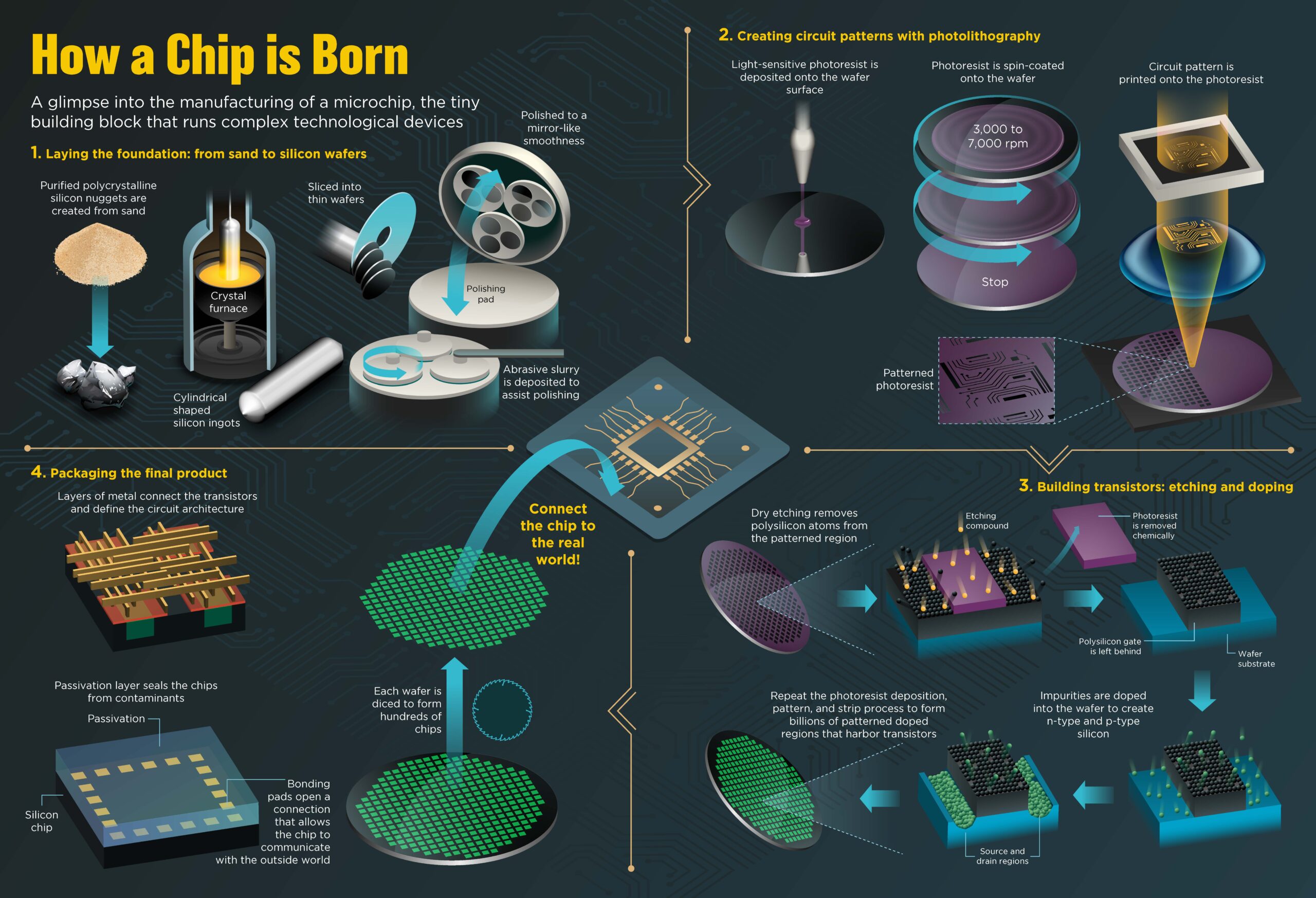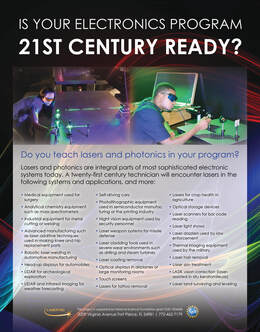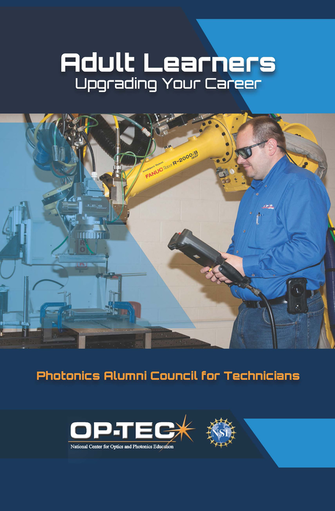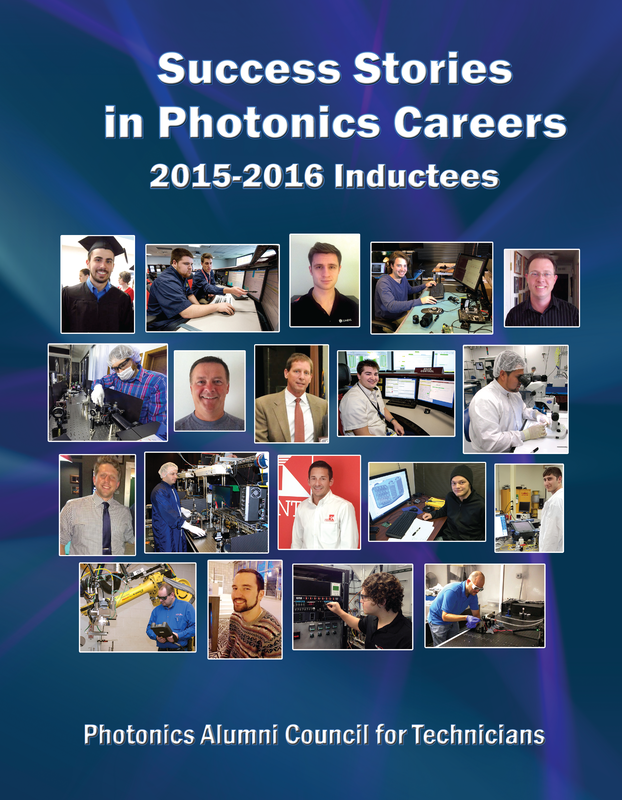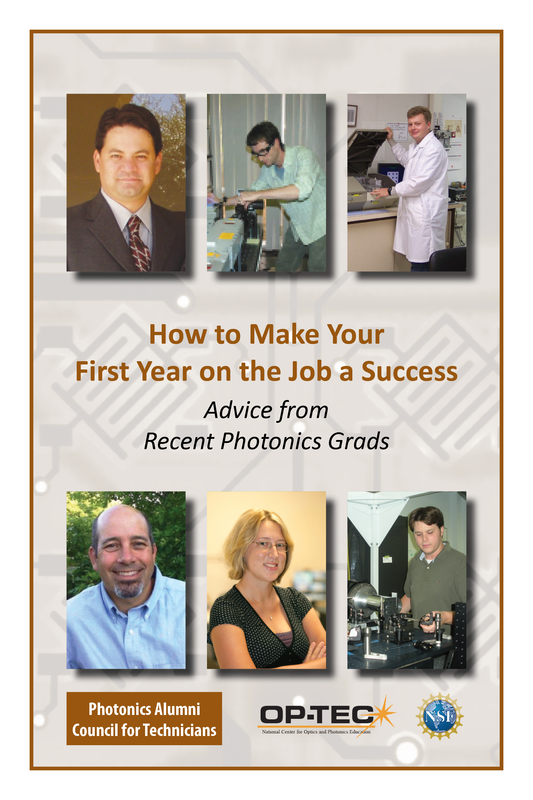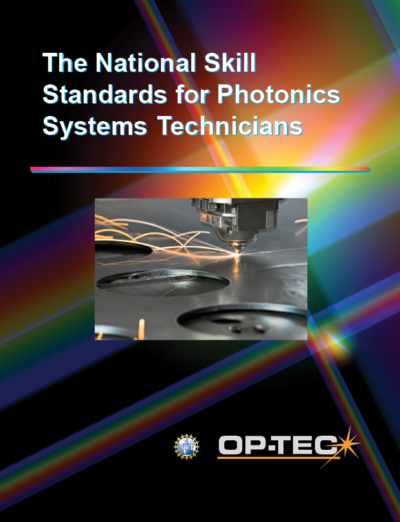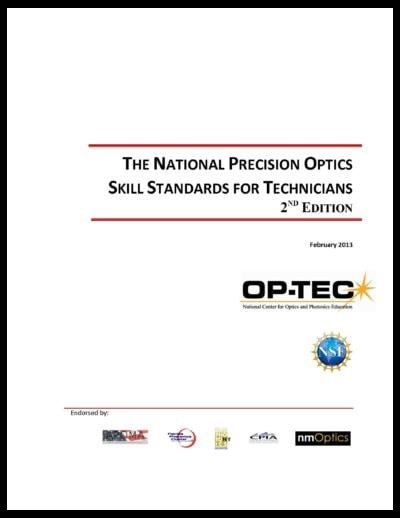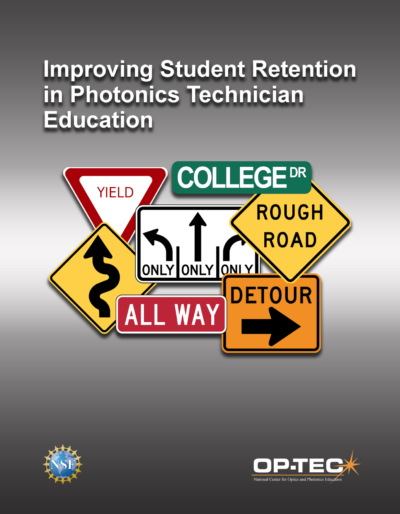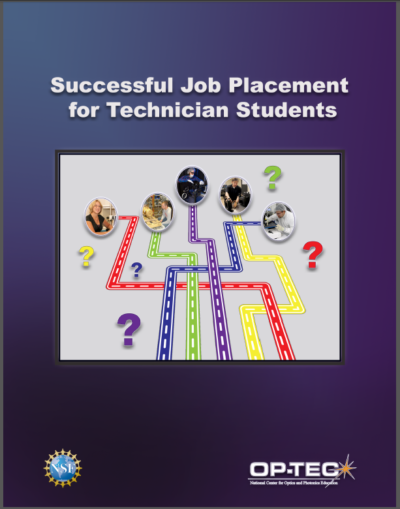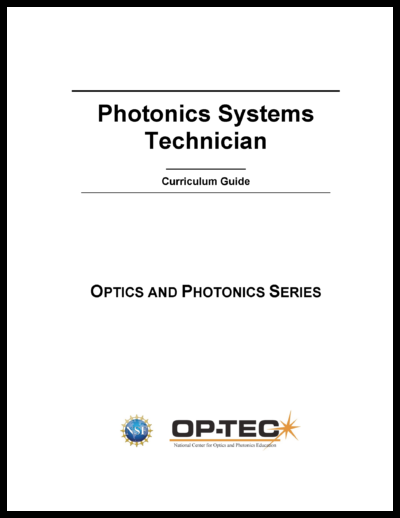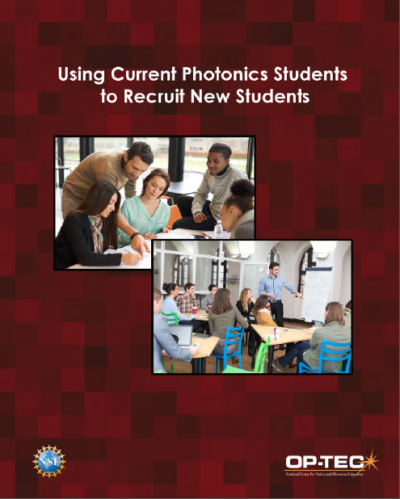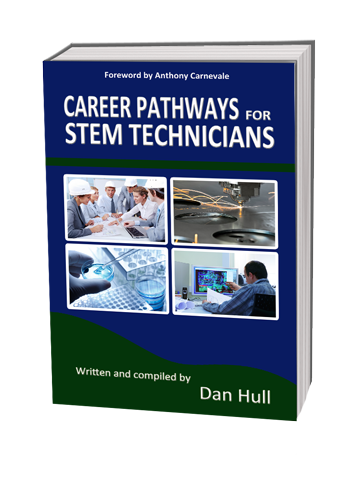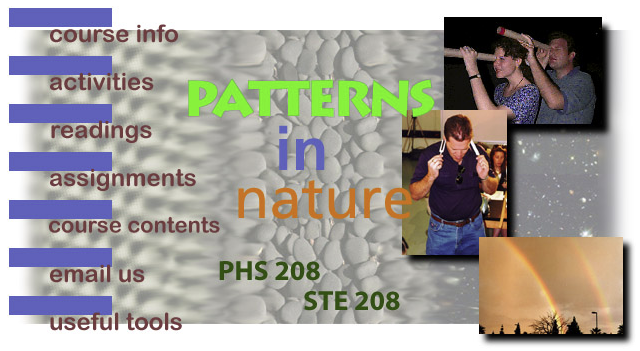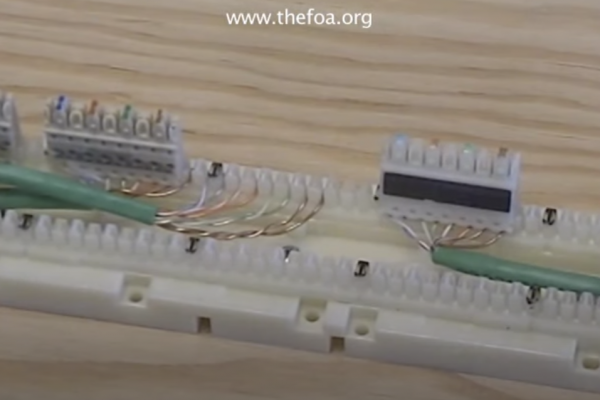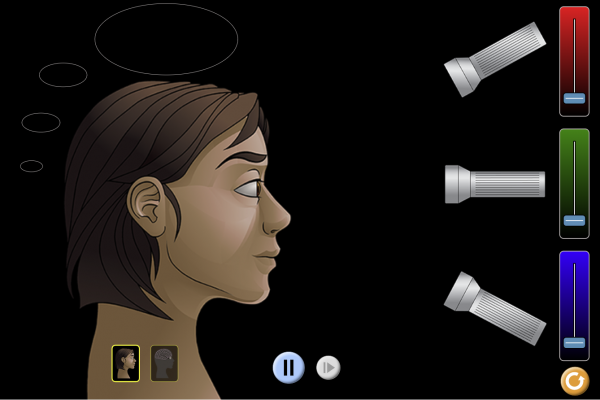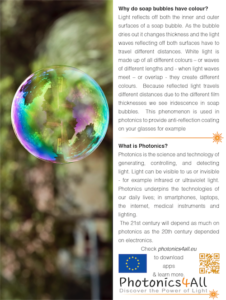Investigate and strengthen your knowledge of laser, photonics, and fiber optics technologies with our series of online courses for photonics technologists.
Designed to fit into your schedule, our self-paced courses allow users to register at any time and gain access immediately from desktop or mobile devices.

This course covers the fundamental principles of light, such as the terminology relating to light, the behavior of light in different environments, and light generation and manipulation.

This course teaches principles of geometrical and physical optics that can be applied in the fields of electronics, instrumentation, telecommunications, and biomedical equipment.
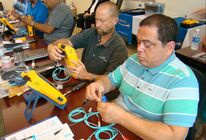
This course provides a practical, real-world perspective on the fundamentals of fiber optics technology and optical data communications.
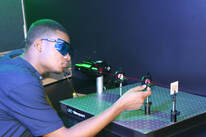
This course builds on the previously acquired knowledge and skills taught in the Introduction to Photonics and the Geometrical Physical Optics courses.
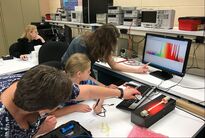
A detailed description and learning outcomes for this course are still in the works and will be provided when available. All suggestions welcome.
An easy-to-read introductory textbook written for the technologist and technician in mind. It provides the skills and theory necessary for someone who wants to enter the fiber optics field. It includes laboratory exercises with the latest industrial equipment.
View lecture videos for this textbook.
A technician-level, standards-based comprehensive study of basic photonics concepts. For students in AAS optics, laser/electro-optics, and photonics enabled technology programs, high school dual-credit courses, or for employed technicians working in photonics enabled areas.
View resources for this textbook.
Laser Systems and Applications, 2nd Edition is the student text and laboratory manual for a two-semester, hands-on course to support curriculum for educating and training photonics systems technicians. It is preceded by a one-semester course, Fundamentals of Light and Lasers. These materials are used in Associate of Applied Science (AAS) curricula in two-year colleges, as well as for educating employed technicians.
Mathematics skills are essential for satisfactory progress in learning the technical content of material found in typical two-year engineering technology education programs. Students entering such programs come with varying backgrounds of mathematics achievement. This is a student review and study guide to help aspiring engineering technicians begin their studies with adequate math skills.
A versatile, low-cost kit that contains all the tools and materials necessary to introduce the basics of lasers, optics and fiber optics to students. A total of 15 demonstrations can be conducted by utilizing the Light and Optics Exploration Demonstration Lesson Plans. The kit is best suited for middle and high school curricula where the focus is made on observations and demonstrations of various phenomena.
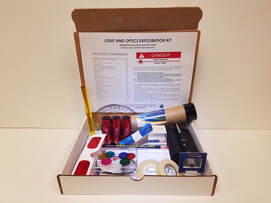
A versatile, low-cost kit that contains all the tools and materials necessary to introduce the fundamentals of lasers and fiber optics to students. This kit is ideal when purchasing large quantities for classroom use to reduce costs.
The contents inside of this kit can be used to conduct 23 experiments in the areas of geometric optics, wave optics, and laser basics. Included in this kit is the Light and Optics Experiment Book. The kit is best suited for into to photonics curricula in two-year colleges and high school AP STEM classes.
A kit that allows students to build their own laser-enabled security system. It includes two mirrors, one red laser, one photo sensor equipped with an alarm, and one treasure figurine. It provides a tangible example of a laser application.
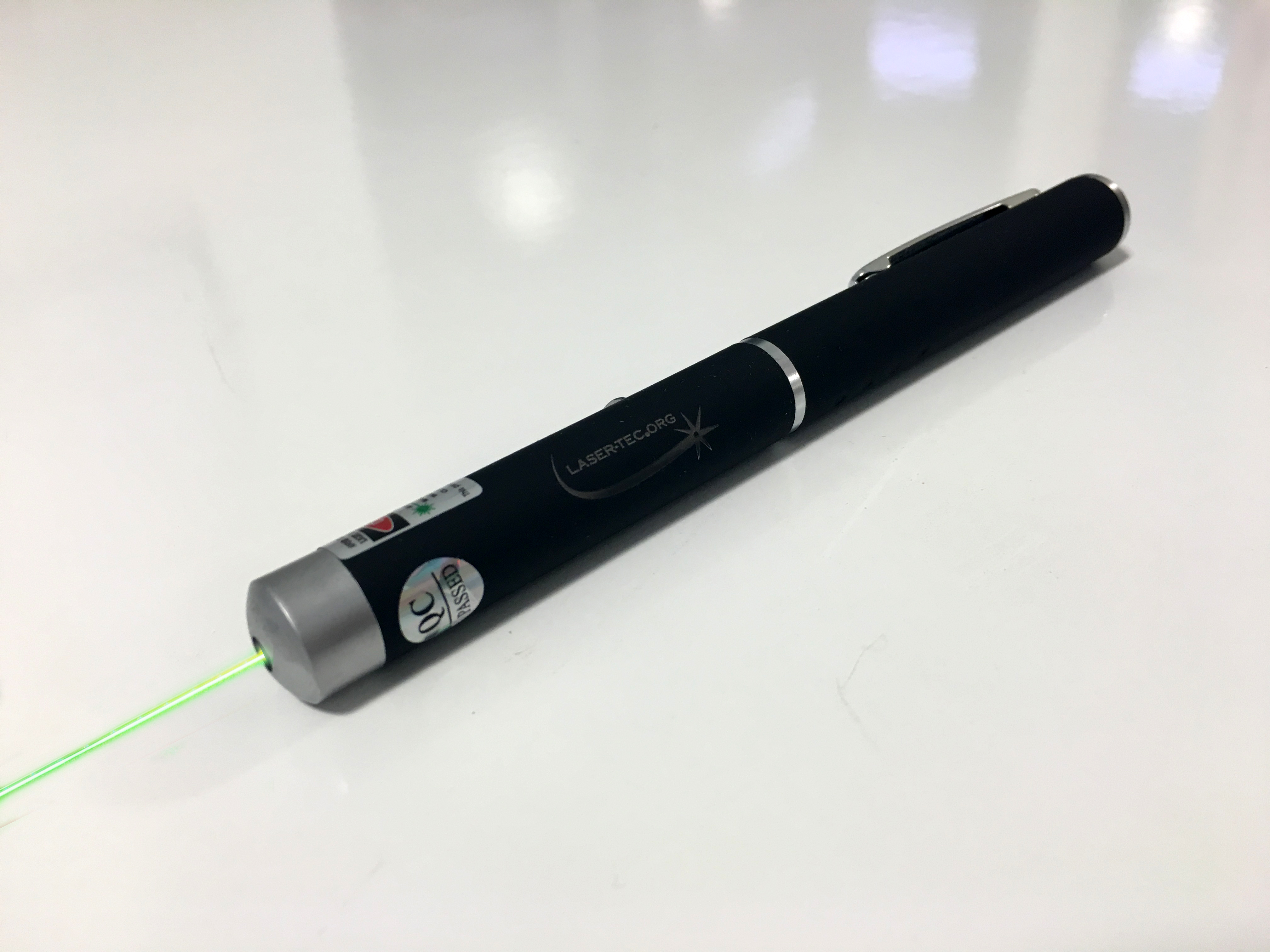
A green (532 nm) laser pointer with an infrared filter that reduces the IR power output to eye-safe levels.
Therapeutic Applications of Lasers was created to provide a fundamental background for technicians on the theory of laser-tissue interactions, optical delivery systems, and to describe common applications of lasers in different fields of therapeutic treatments. The module includes the following chapters: properties of laser light, laser-tissue interaction theory, beam delivery methods, lasers in dermatology, lasers in ophthalmology, lasers in cardiology, lasers in gynecology, lasers in urology, lasers in dentistry, lasers in neurosurgery, photodynamic therapy and ultraviolet therapy.
Lasers in Medicine and Surgery was created to provide a fundamental background for technicians on the theory of laser-tissue interactions as well as to describe commonly used lasers in medicine, optical delivery systems, and accessories frequently used with lasers. The module includes the following chapters: properties of laser light, laser-tissue interactions, commonly used lasers, delivery systems, laser accessories, and two laboratories: Exponential Beer’s Law of Absorption, Advanced CO2 Laser Laboratory.
Diagnostic Applications of Lasers was created to provide background information for technicians on the theory of imaging and photophysical applications. The module chapters include microscopy, imaging techniques such as multi-photon and near–field microscopy, light scattering spectroscopy, velocimetry, medical tomography, holographic imaging techniques, laser application in imaging, photobiological techniques.
Wide Bandgap Semiconductors, GaN and SiC module was created to introduce this emerging field in the engineering technology and related associate level curriculum. This module is intended for use in technical programs after covering basic semiconductor theory and discrete devices such as silicon diodes, bipolar junction, field effect, and MOSFET transistors. It is designed to be used in a certificate or associate degree program in electronics engineering technology. This will not only update course content but will also provide students with the latest industry-expected skills.
A course module on absorption, emission, and Raman spectroscopy
Available resources
Pdf documents about spectroscopy concepts and applications, different types of spectroscopy, instrumentation, lab activities on measuring absorbance and light source emission developed and by Ocean Optics and BWTek.
A power point on Raman spectroscopy and applications.
An instructional video about Raman spectroscopy using Wasatch Photonics Spectrometer.
Educational level and use
College, vocational schools, industry training
A course module about fundamentals of semiconductor theory, light emitting diodes, their characteristics, colorimetry, photomentry, and LED testing.
Available resources
11 power point presentations
Educational level and use
College, vocational schools, industry training
A course module about basics of thermoelectric devices and technology.
Available resources
2 power point presentations
Educational level and use
College, vocational schools, industry training
A course module about manufacturing solid-state lasers and processes in growing solid-state crystals.
Available resources
1 power point presentation
4 pdf documents, student text
Educational level and use
College, vocational schools, industry training
A course module about general aspects in field service engineering, skills sets, attributes, and career paths.
Available resources
1 power point presentation
Educational level and use
College, vocational schools, industry training
A course module about designing and testing high-energy pulsed solid state laser systems.
Available resources
1 power point presentation
Educational level and use
College, vocational schools, industry training
This course addresses the basics of specification, manufacturing, and assessment of precision optics. It presents an introduction to quality assurance (QA) practices required to identify, inspect, and measure optical components. Materials and tools found in industrial optics fabrication and inspection shop are used in lecture demonstrations and laboratory experiments. Students will gain hands-on experience with these industrial materials and QA tools in the laboratory.
This course was developed under DUE1801019 OPAL-TEC.
This course introduces the fundamental properties of light, including its interaction with and generation from materials. Optical hardware is used in lecture demonstrations and laboratory experiments to show how light can be controlled. Essential components of optical systems are studied, including lenses, mirrors, prisms, windows, sources, detectors, optoelectronics, polarizers, fibers, and gratings. Students will gain hands-on experience with industrial hardware and tools as they construct basic optical component test setups and systems in the laboratory. Total of 36 hours lecture and 54 hours laboratory.
This course was developed under DUE1801019 OPAL-TEC.
This course explores the principal tools that are used when working with light, such as lasers and other light sources, cameras, and sensors. Optical hardware and its constituent components will be studied, including fundamentals of lasers to gain media, pump sources, and mirror cavities; investigation of camera components and essential chemistry. Students will gain hands-on experience with industrial hardware and tools in the laboratory.
This course was developed under DUE1801019 OPAL-TEC.
This course is a hands-on laboratory course that will detail the measurement techniques required to ensure that a fabricated assembly or system of optics meets its procurement specifications. It covers the design and application of optical metrology instrumentation such as interferometers and modulation transfer function measurement systems. Emphasis is on test applications that are required in optical engineering and manufacturing. Students will gain hands-on experience with industrial hardware and laboratory tools.
This course was developed under DUE1801019 OPAL-TEC.
Informational poster about diode lasers. It features general definitions, energy level diagram, advantages, common applications, materials used in diode lasers, and output characteristics of diode lasers.
Available resources
High resolution pdf file available for download
Educational level and use
High schools, colleges, vocational schools
Informational poster about fiber lasers. It features general definitions, energy level diagram, advantages, common applications, various configurations and structure of fiber lasers.
Available resources
High resolution pdf file available for download
Educational level and use
High schools, colleges, vocational schools
Informational poster about HeNe lasers. It features general definitions, energy level diagram, advantages, common applications, structure of the resonator cavity, information about longitudinal and transverse modes, conditions for stable resonators, and characteristics of HeNe lasers.
Available resources
High resolution pdf file available for download
Educational level and use
High schools, colleges, vocational schools
Informational poster about Nd:YAG lasers. It features general definitions, energy level diagram, advantages, common applications, structure of a modular educational Nd:YAG laser, functionality of its components, technical data and graphs specific to Nd:YAG lasers.
Available resources
High resolution pdf file available for download
Educational level and use
High schools, colleges, vocational schools
Informational poster about laser safety. It features updated laser classifications according to ANSI Z136.1., typical laser hazards, safe work practices, list of common lasers, their wavelengths with relevant average power density and exposure time data, formulas for calculation of OD and transmittance, and schematics of propagation of different wavelengths in human eye.
Available resources
High resolution pdf file available for download
Educational level and use
High schools, colleges, vocational schools
Display this poster in your classroom and encourage girls to follow their dreams in high-tech. This poster was created for girls in high school, but will be a good addition to a classroom of any school grade level or college.
Available resources
High resolution pdf file available for download
Educational level and use
High schools, colleges, vocational schools
Informational poster about the fundamental concepts of classical physics. It features Isaac Newton, James Maxwell, and their contributions to science; particularly, Newton’s laws of motions and electromagnetic wave theory. Poster #1 in the series of posters about quantum.
Available resources
High-resolution pdf file available for download
Educational level and use
High schools, colleges, vocational schools, research laboratories
Infographic developed by SPIE featuring the main applications of quantum: quantum sensing & metrology, quantum computing, quantum communication, and quantum imaging. The poster describes different stages of technology readiness.
Available resources
Vector pdf file available for download
Educational level and use
High schools, colleges, vocational schools, research laboratories, industry training
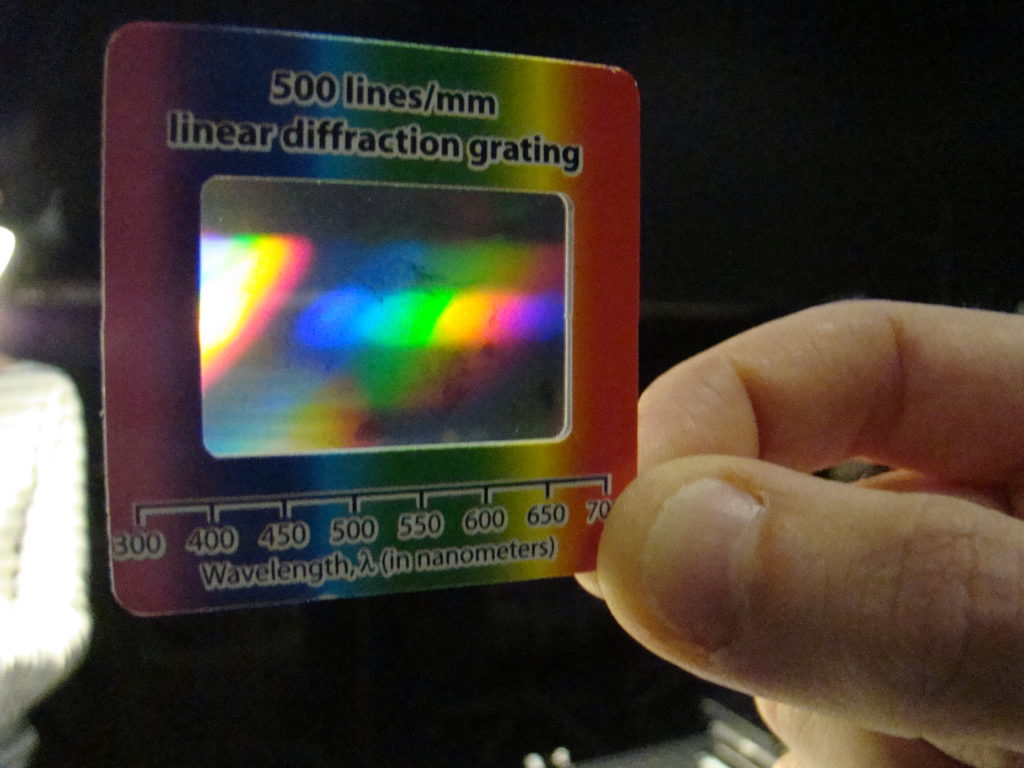
A hands-on demonstration about white light and the visible light spectrum of colors.
Available resources
2-page handout
Diffraction gratings/glasses
Educational level and use
K-12 schools

A hands-on demonstration about light polarization and optically active materials.
Available resources
2-page handout
Polarizing film & optically-active tape
Educational level and use
K-12 schools

A build-your-own fiber optics lamp that teaches students about light, electronics, and fiber optics.
Available resources
Instructional guide (coming soon)
List of components
Educational level and use
K-12 schools
This set of 4 brochures provides resources to military veterans who would like to pursue a career in the lasers and fiber optics industry. Veterans who completed training for any of the military occupational specialties listed on the brochures are excellent candidates for employment in this field. Each brochure provides a quick overview of the photonics industry and includes steps to enroll in college classes.
Educational level and use
It would be appropriate to display these brochures at Veteran’s Affairs offices of colleges with photonics programs and at military Transition Assistance Program (TAP) offices.
This flyer was created to assist students in the decision-making process of choosing a career by explaining the advantages of studying robotics and photonics. Highlighted on this flyer are the top reasons why students and graduates ultimately chose to pursue a degree in this field.
Educational level and use
K-12 schools, colleges with photonics programs
A brochure that categorizes all the different business sectors where a robotics and photonics technician could work. It lists the industries within each sector, the tasks of the technician, and the job title and average salary for each position. All of the information collected on this brochure is from the website O*NET Online which is sponsored by the Department of Labor.
Educational level and use
K-12 schools, colleges with photonics programs
LASER-TEC offers a Career Preparedness Workshop for all of our partner and OPCN colleges.
This workshop will help students and graduates to:
- Connect what they learned in their photonics program to what an employer needs
- Understand what to expect when searching for employment
- Focus on areas that need to be improved
- Gain confidence
We also have hand-selected career preparedness resources available.

Call us at 772-462-7295 or email info@laser-tec.org for more information about our resources available for you.




